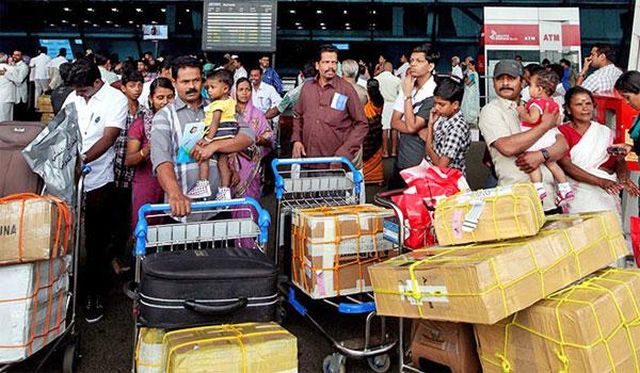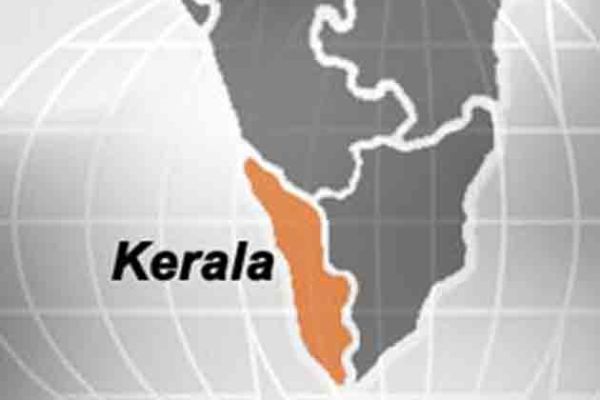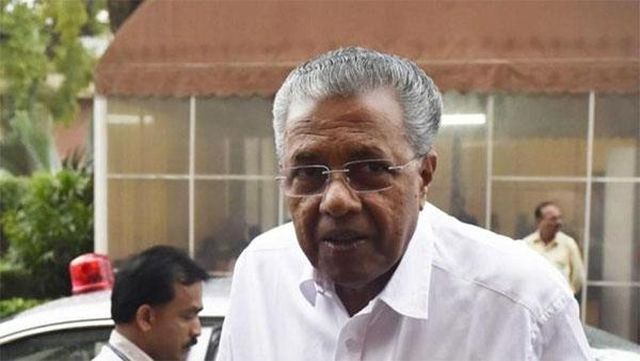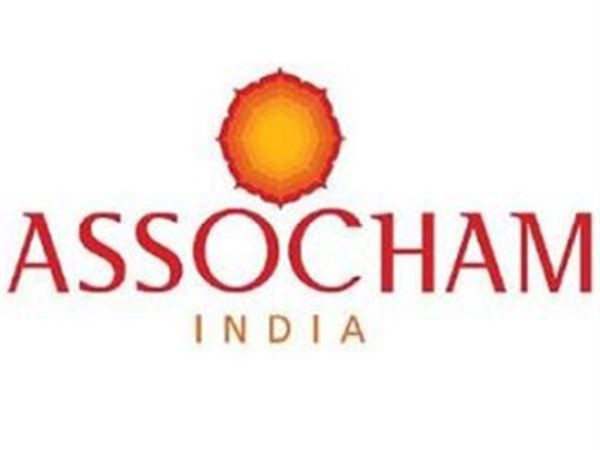
by Editor | May 25, 2021 | Economy, Employment, News, Overseas
 By Sanu George,
By Sanu George,
Thiruvananthapuram : With the Middle East, which was once the dream of many a Keralite, no longer that attractive on account of falling oil prices and with no proper records of the actual number of returnees, a new diaspora study covering 25,000 households has been launched to find out what the actual scenario is.
The study aims to not only analyse not the present trends in migration but also the medium and long-term consequences of important developments like the global financial crisis of 2009, the drop in oil prices and the stricter immigration policies increasingly followed by countries worldwide and its impact on Kerala’s economy.
S. Irudayarajan, who heads the study by the Migration Unit at the Centre for Development Studies here said its single purpose is to examine ground realities and not to go by unfounded reports that there is a mass exodus from the Middle East.
“This new survey has been titled Kerala Migration Study-KMS@20. It is the eighth a series that begain in 1998. The study would be done in 25,000 Kerala households spread over all the 14 districts and the first results would emerge in April,” Irudayarajan told IANS.
KMS is widely regarded as a reliable and authentic source of data for researchers and policymakers. Following the success of the Kerala model, similar initiatives have been launched in Tamil Nadu, Punjab, Goa and Gujarat, from where large numbers of people have spread out across the globe.
Irudayarajan pointed out that structural changes in the global oil market and the consequent fall in oil prices have posed fresh challenges to the oil-producing countries in the Middle East in the last few years.
“The repercussions are being felt in Kerala’s economy and society which has been a consistent supplier of workers and a receiver of large amounts of remittances. Additionally, the governments in Gulf countries have been progressively evolving institutional arrangements and programmes aimed at promoting the employment of their own nationals,” Irudayarajan said.
He also pointed out that the things are not rosy was pointed out in the KMS-2016 study, when for the first time a decline was noticed in number of Kerala emigrants abroad from 2.4 million in 2014 to 2.24 million in 2016 — a drop of 160,000 lakh.
The state had 1.36 million emigrants when the first KMS was conducted in 1998. The figure rose to 1.83 million in 2003, 2.19 million in 2008, 2.28 million in 2011 and peaked at 2.4 million in 2014.
He added that once the results are out later in the year, the state government can evolve appropriate interventions in education, employment and skill development of prospective emigrants as well as the re-integration of returnees into Kerala’s economy and society.
Irudayarajan pointed out that it was wrong to come to conclusions only based on the arrivals and departures from the three Kerala airports as this will only give a lop- sided picture.
“The figures from the airports are only numbers and do not differentiate between workers and others, as they include women and children. Besides, there are a good number of Keralites who goe for holidays to the Middle East. Our 2016 survey had already showed that there was a decline and now in a few months from now, we will bring out the actual picture,” Irudayarajan added.
Remittances from migrants have been instrumental in sustaining Kerala’s economy, constituting 36.3 per cent of the state’s net domestic product. It is now widely accepted that migration has played a significant role in poverty alleviation and in raising the living standards of about one-third of Malayali households.
“Moreover, it is postulated that an additional one-third of the population is indirectly benefitted from the economic opportunities created by remittances from abroad,” Irudayarajan explained.
According to the figures released by the State Level Bankers Committee, the rate of growth of NRI deposits has come down of late. If one looks at the deposits at the 6,339 branches of various commercial, scheduled and private banks, they stood at Rs 117,349 crore in June 2015, grew to Rs 142,668 crore in June 2016 and at Rs 154,252 crore in June 2017.
(Sanu George can be contacted at sanu.g@ians.in)
—IANS

by Editor | May 25, 2021 | Business, Corporate, Corporate Governance, Economy, Markets, Medium Enterprise, News, SMEs
 (Note Ban Series)
(Note Ban Series)
By Sanu George,
Thiruvananthapuram : The two main industries of Kerala, seafood and tourism, escaped the brunt of demonetisation, as did the information technology sector. But agriculture — rubber plantation in particular — suffered adverse impact, from which it is yet to fully recover.
Seafood exports from the state bring in a large proportion of Kerala’s revenue. It showed no adverse impact. If anything, exports grew by 20 per cent in volume terms and 25 per cent in value during the first quarter of 2017-18 compared to the first quarter in the previous year. And tourism keeps the Kerala economy flying.
“Figures from the first quarter speak the story and it has done well,” A. Jayathilak, Chairman of the Marine Products Export Development Authority, told IANS, adding that there was no impact of demonetisation on this sector.
He said seafood exports from the country stood at 251,000 tonnes valued at Rs 9,066 crore ($1.42 billion) in the first quarter of the current fiscal, up from 201,000 tonnes worth $1.17 billion during the previous quarter of 2015-16.
The I-T industry also evaded any adverse impact, largely because most transactions in the sector were carried out through the banking channels. “On the contrary, demonetisation served to reinforce the industry’s resolve to rigorously follow governance and compliance norms. Since the IT industry, from its formative stages, was not in the clutches of the tax-men, it developed as a legitimate above-board industry,” said V.K. Mathews, a member of Nasscom and head of IBS Software Services.
Mathews said demonetisation was a bold move. “It is indeed daring, considering its scope and implication over such a large population, where corruption and noncompliance are part of the nation’s culture — India is the most corrupt nation in Asia and among the worst in the world, according to the recent Forbes report,” he added.
The first CEO of Technopark and former Kerala State Planning Board member, G.Vijayaraghavan, told IANS that he had been a supporter of the demonetisation programme from the very beginning and continues to support it. “But”, he said, “I feel the whole exercise could have been done better by taking into confidence all the chief ministers and the state finance ministers a few hours before it was announced, but without giving them the time to inform their cronies about it,” said the technocrat.
He said 80 per cent of Indians did not have a problem with withdrawal limits as these were “much higher than what the majority required.” He said the group that was most impacted was the politicians’.
He said that to conclude that the economy had failed because of demonetisation was like saying that black money was required for economic development. “I am unable to agree with that,” he added.
The tourism industry too remained largely unaffected because most of the visitors make books through the properties or through agents before they arrive.
“If there was any issue, it was related to tourists who had to get Indian currency and also to those who already were in the state and had the notes that went out of circulation . For the business as such , I don’t think there was a direct impact as few resorts collect cash from guests,” said M.R. Narayanan, general secretary of the Confederation of Tourism Industry in Kerala.
According to official figures, foreign tourist arrivals in Kerala in 2016 were 103,800, up from 977,479 in 2015, and domestic tourists grew by 5.67 per cent and touched 13,172,535 visitors. The total foreign exchange earnings from the tourism sector was Rs 7749.51 crore during 2016.
The major impact, however, was felt by the agrarian community, which includes small rubber farmers and also those who were engaged in cultivation of cash crops like banana and arecanut.
“We continue to be affected by demonetisation. It came when rubber prices were already low. It was a cruel jolt as rubber dealers had no money to pay us and this went on for long. For those who had no other source of income, it was a nightmare,” said Thomas Mathew, a small rubber farmer in Kottayam.
The nightmare continued for those engaged in cultivation of banana. November and December are generally the months when fresh plants are sown. With little money to pay for the plants, many had to forego the season’s cultivation. Daily wage earners were, of course, the worst affected.
“We survive by working in small homesteads and with no cash available, people used to avoid calling us to do the daily labour. This went on for several months and that hit us very badly. We wish to know who benefited through this foolish exercise,” asked Sasidharan, a daily labourer.
(Sanu George can be reached at sanu.g@ians.in)
—IANS

by Editor | May 25, 2021 | Investing, News, Politics

Pinarayi Vijayan
By V.S. Chandrasekar,
New Delhi : Kerala will soon formulate an industrial policy under which a single-window system will be put in place to clear investment applications while making it easy to do business in the state, Chief Minister Pinarayi Vijayan has said.
More than a year after his CPI-M-led Left Democratic Front (LDF) government came to power, he says corruption is a thing of the past in Kerala and industrialists are now keen to invest in the state.
“We’re making policies towards ease of doing business. We’re formulating a policy where an industry would get clearance in a particular number of days after filing an application. It would happen soon. We are working towards making Kerala one of the best states in the country,” Vijayan told IANS in an interview.
He said corruption was a big problem in Kerala. “But now there is a common understanding that there is no corruption. Problems at the top level have been removed. Now industrialists are interested to come. And law and order situation is stable and people are ready to come to the state (for investment),” he said.
Asked about new investments, Vijayan said information technology was one field where the state was lacking a bit because of the economic slowdown. “But new investments have been promised. Infosys has promised new investment and one other company has also come forward to invest in the state.”
The 73-year-old Chief Minister said before the LDF came to power, there was a sense of hopelessness. “There were many achievements we had made earlier but after that nothing was going forward. There was a standstill. There was climate where nothing was going forward. Many plans were stuck. The state’s common demands were not being met.
“For example, the problem of national highway widening. Everyone had agreed for 45 m (width of the highway), all political parties had accepted for 45 metres. But, it was kept aside. When we came, we said everyone had agreed for 45 m, so we have to implement it now. When we decided to do it, the people were with us.”
Earlier, he said, the feeling was that no land could be acquired. At some places there were groups which were supposedly protesting for the people. But the reality was that groups which oppose everything were opposing the move. “But we took a stand that it should be done.”
He said now, apart from the normal delay in land acquisition, there was no situation that land cannot be acquired due to people’s opposition.
From Kasaragod (in north Kerala), many places have reached a stage where tendering can be done. Thalassery bypass has reached tendering stage. In rest of the places, decisons on how much land has to acquired are being taken. Everyone believes that things will happen now, Vijayan said.
Similarly, Vijayan said GAIL was laying a pipeline to take liquified natural gas (LNG) from Petronet in Kochi to Mangalore. “We also need this for our power plants. The plan was kept aside thinking that it won’t happen. When we came, we said this has to be implemented. Some people opposed it as usual. If some people oppose, government will have to take action if we have to go forward. Now the project is going to be completed in a time-bound manner.”
He said the Kudankulam power line had to go through Kottayam and in some places rubber trees had to be cut and the project was abandoned because of that.
“We said it has to be implemented. We took due procedures. A former Chief Minister called and said we should come to a compromise. We didn’t have any problem with it. We just wanted to make the project work and there was nothing else. Now the project is going on. These are the changes. Now there is a belief that things will happen.”
He said almost all public sector units were suffering losses. Some have now become profitable and work is underway to make the rest profitable.
(V.S. Chandrasekar can be contacted at chandru.v@ians.in)
—IANS

by Editor | May 25, 2021 | Business, Economy, Large Enterprise, News
 Thiruvananthapuram : A village in the backwaters of Kerala is vying for top honours at the London World Travel Mart. After almost a decade of practising ‘responsible tourism’ (RT), the picturesque Kumarakom tourist destination is aiming to seek global recognition.
Thiruvananthapuram : A village in the backwaters of Kerala is vying for top honours at the London World Travel Mart. After almost a decade of practising ‘responsible tourism’ (RT), the picturesque Kumarakom tourist destination is aiming to seek global recognition.
The Kumarakom initiative had been selected as one of the 12 RT projects from across the globe and the award declaration is scheduled to be made on November 8.
A detailed two year study on the Kumarakom initiative has been submitted along with the application at the WTM, according to K.Rupesh Kumar, coordinator at the Kerala State Responsible Tourism Mission.
Kumar along with two others — Jenefer Bobbin and Harold Goodwin of the International Centre for Responsible Tourism, London — carried out the study with extensive field visits.
The nearly two year long study found that “the positive impacts of tourism” resulted in better roads, better prices for local produce and increased job opportunities. On the negative aspects, it found that water was getting polluted and that land prices had shot up.
The initiative also created a range of self-help groups which sold agricultural and handicraft products to the hotels and resorts. The study found that 2,793 men and 1,062 women were involved in some way with the tourism industry.
Kumar said that all these achievements did not take place overnight as he and many others came into the RT movement after seeing that Kumarakom destination was developing in an “unscientific manner”.
The mainstay of Kumarakom, located 13 kms from Kottayam next to Vembanad lake, is houseboat tourism and home stays. There are nineteen resorts in the area. Almost 70 per cent of the households are engaged in tourism activities, the study said.
“It was through a protest in 2007 that we highlighted that there had to be a system in place to take forward the local community in tourism. We also highlighted that there could be no unscientific development in Kumarakom and it proved to be a success,” Kumar said.
—IANS

by Editor | May 25, 2021 | Business, Economy, Emerging Businesses, Markets, News, SMEs
 Thiruvananthapuram : Kerala is second only to Karnataka in terms of manufacturing excellence across the country, according to a study conducted by the apex industry body Assocham, which was released on Friday.
Thiruvananthapuram : Kerala is second only to Karnataka in terms of manufacturing excellence across the country, according to a study conducted by the apex industry body Assocham, which was released on Friday.
“Kerala has second highest ratio in terms of road density, third highest ratio in terms of efficiency and fourth highest capacity utilisation ratio denoting state’s performance in these parameters during the course of past five years, said the study titled ‘Manufacturing Excellence and Emergence in India: The state level analysis’.
Besides, Kerala also has recorded third lowest ratio in terms of employee cost and sixth highest manufacturing process ratio.
The study considered various parameters like number of factories, output value, working capital, net fixed capital formation, fixed capital, finished goods, capital invested, total inputs and others to ascertain the states’ performance in terms of manufacturing sector.
The study also pointed out that, Kerala needs to work towards improving its performance in areas like growth of industries (13th rank), capital structure (16th) i.e. improving the ratio between invested and fixed capital. Besides, the state also needs to register improvement in terms of brining down input cost as it ranks 16th in total input cost as a proportion of value of output (lower ratio is better).
“The central government must address issues relating to poor product quality, infrastructural bottlenecks and inadequate efforts at research and development from a holistic macro perspective as they have collectively taken a toll on India’s manufacturing competitiveness,” the study said.
—IANS





